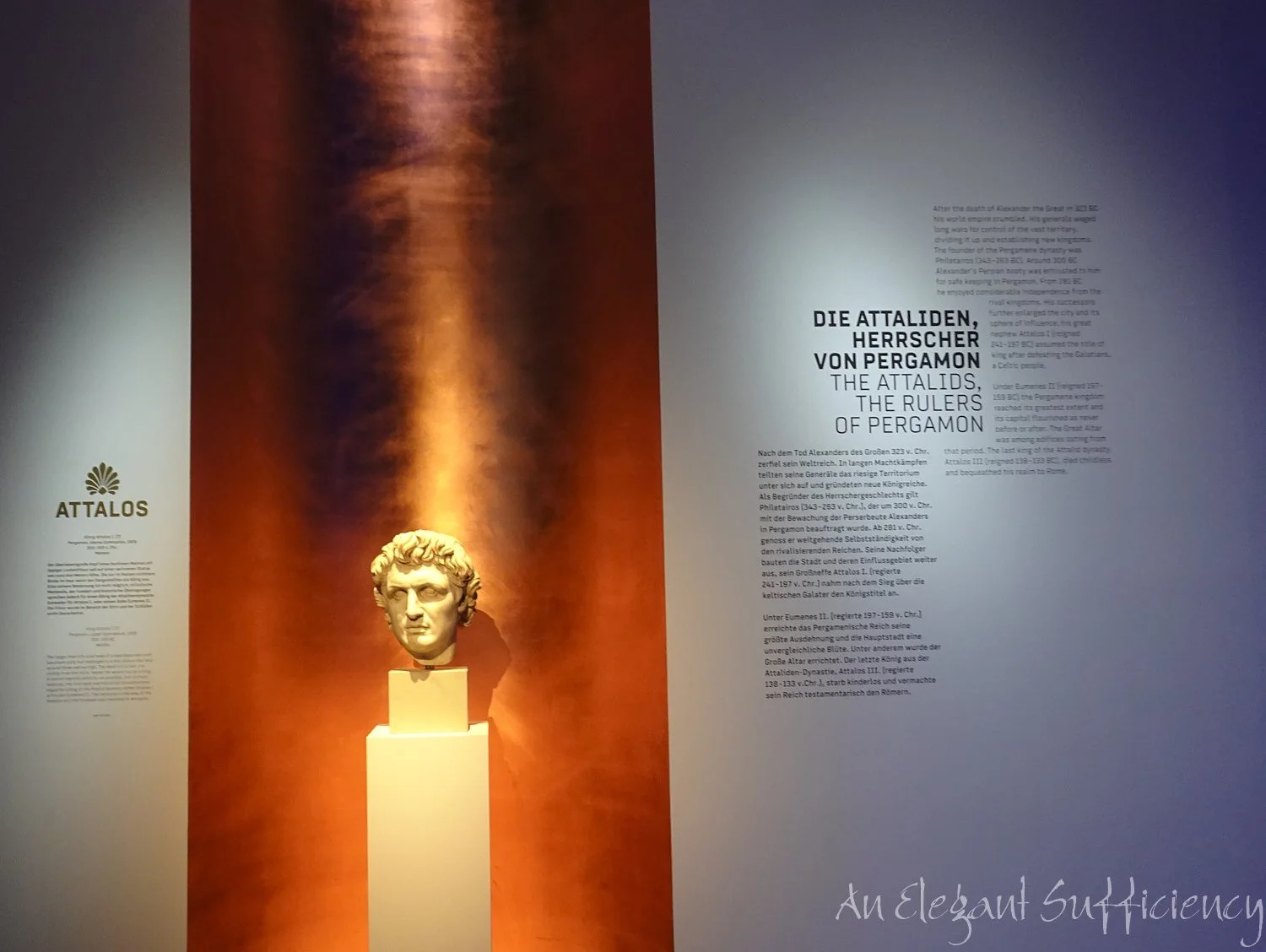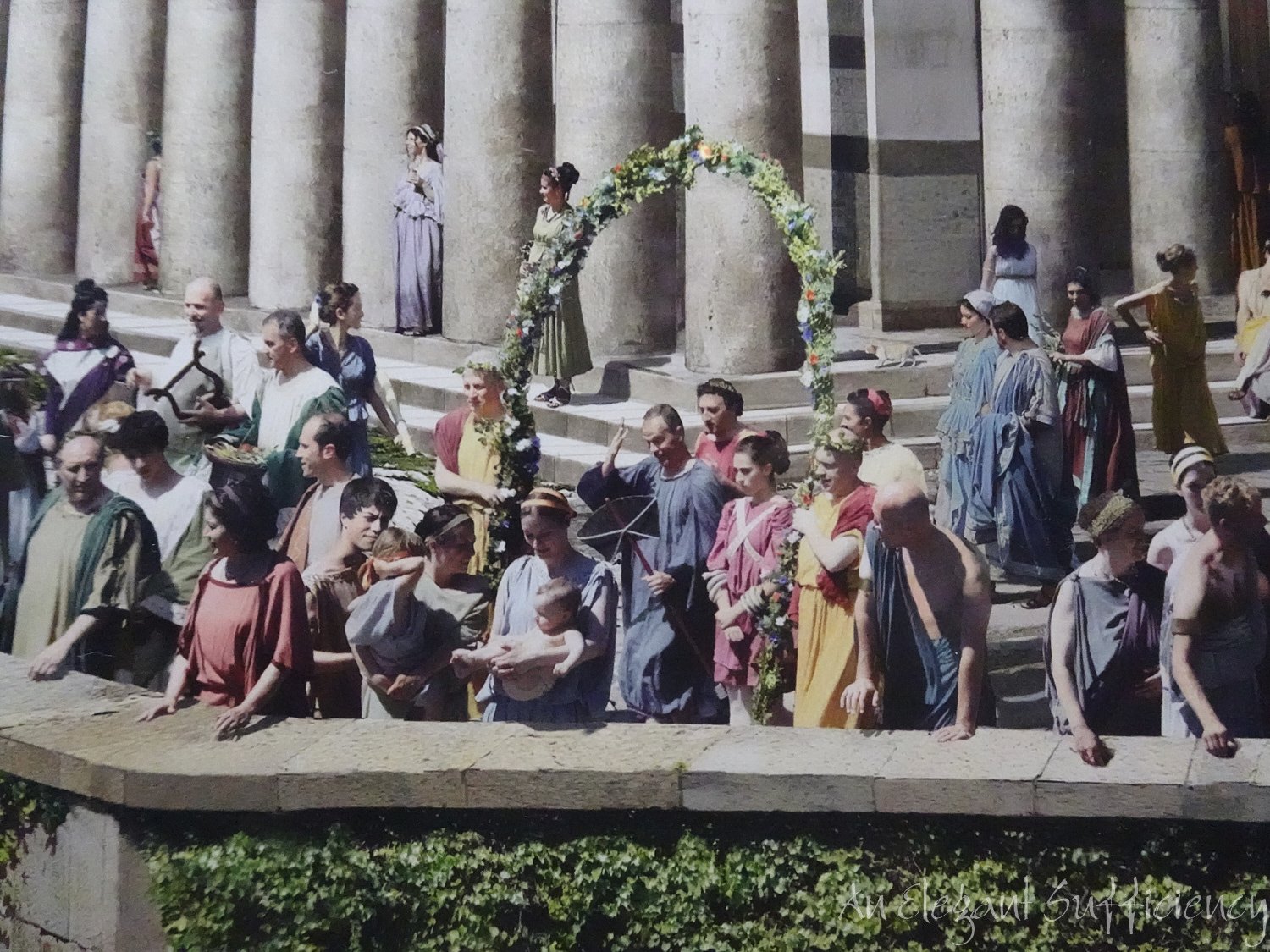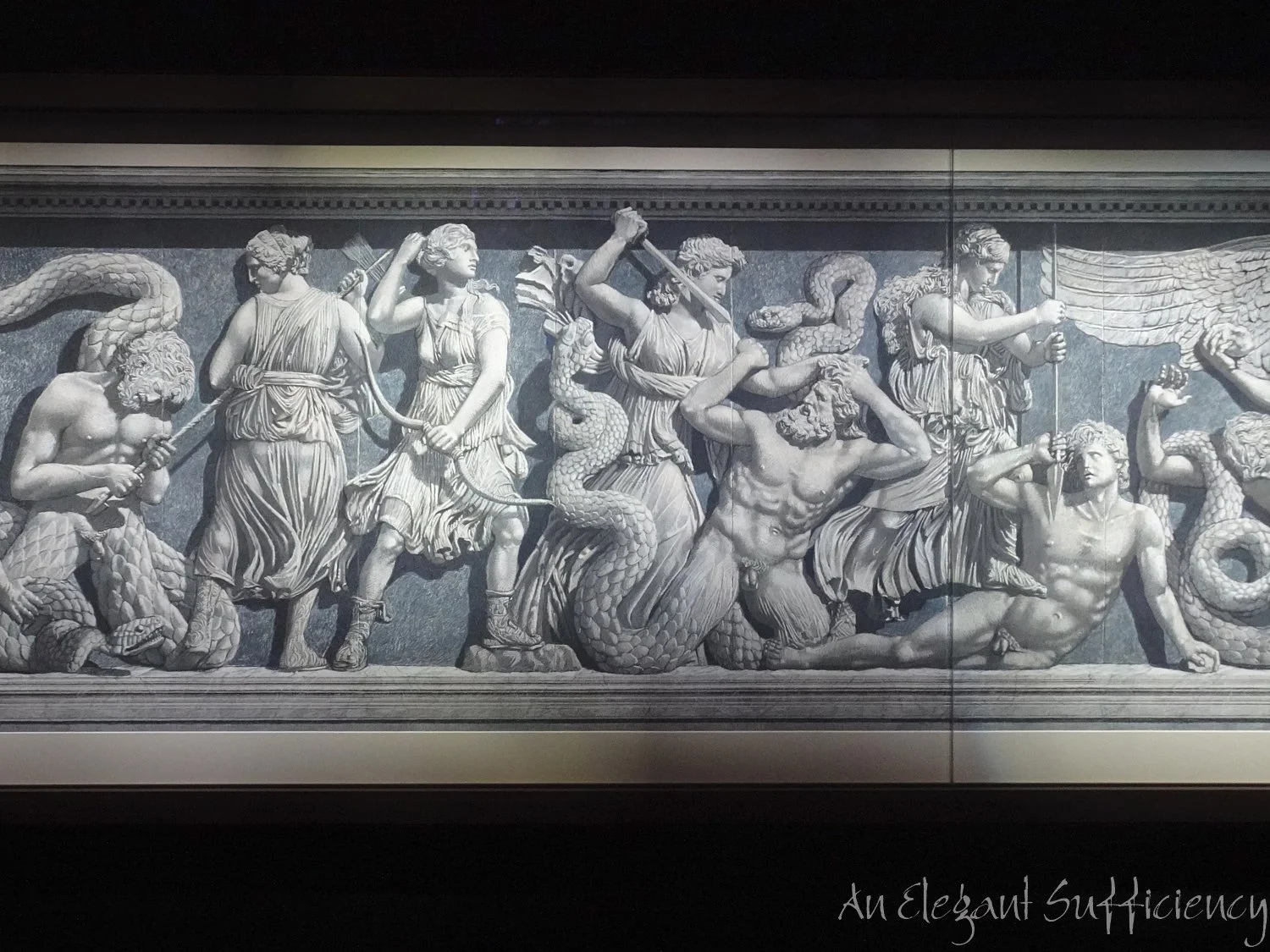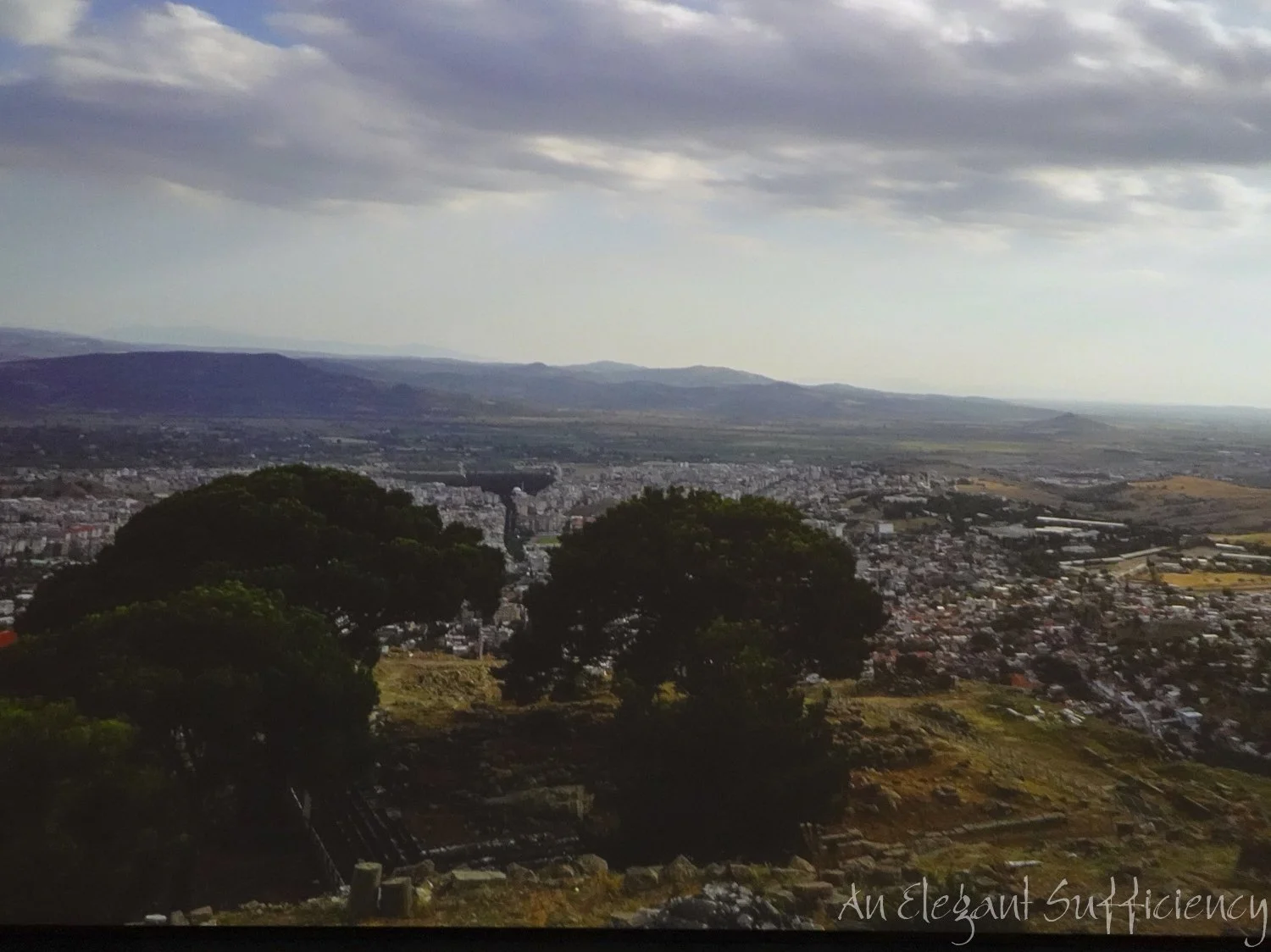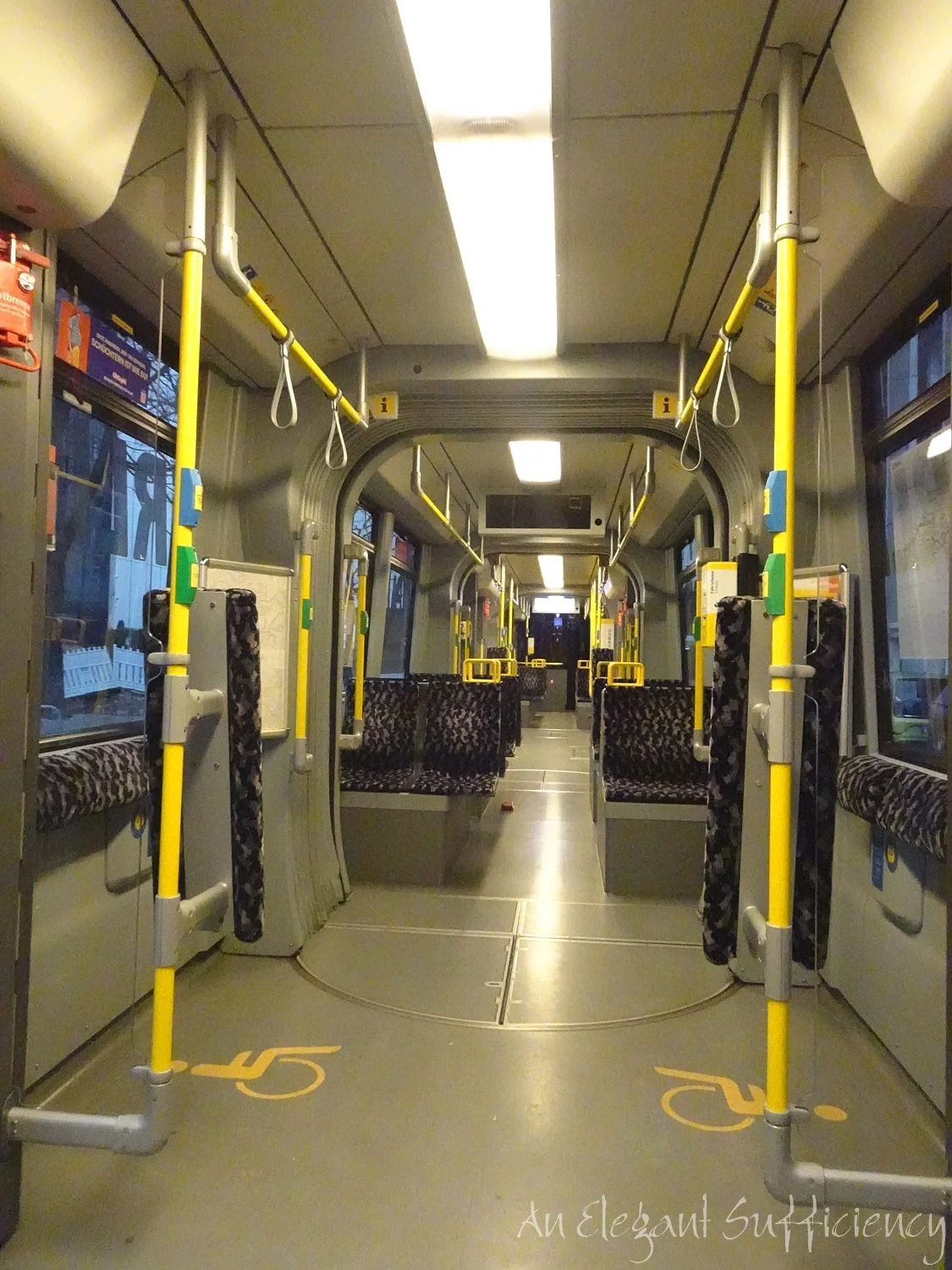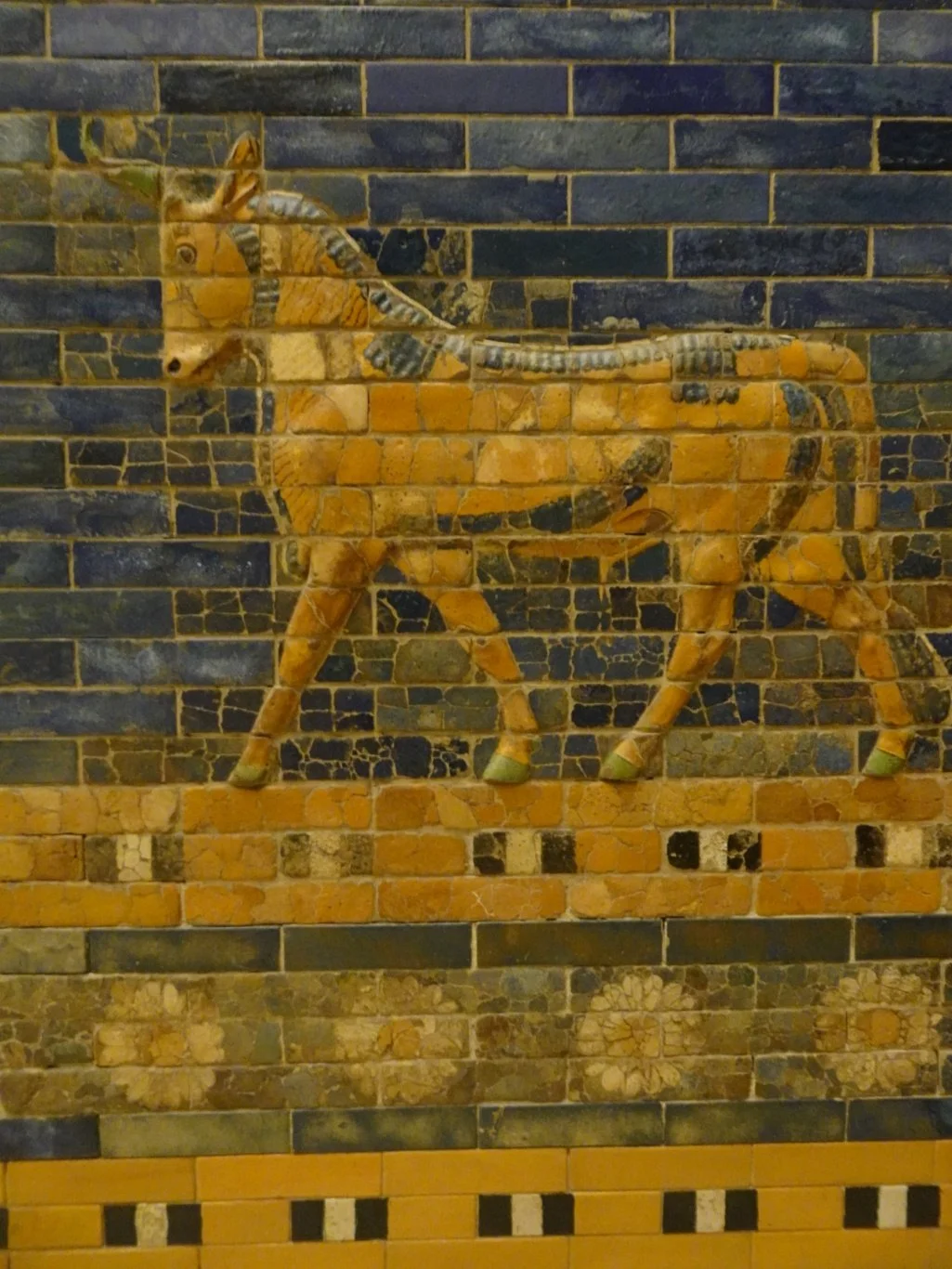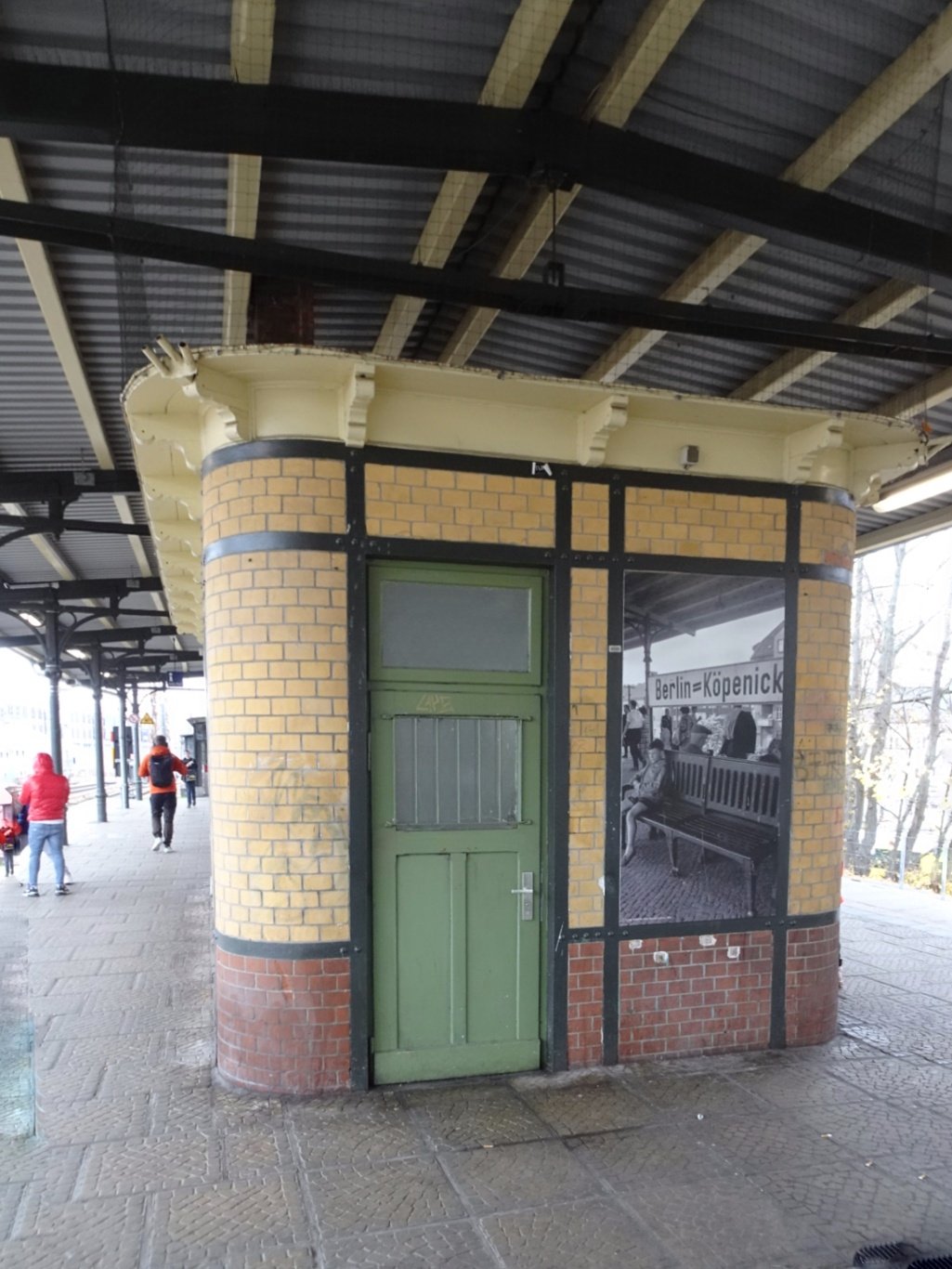Sunday Sunday
Continuing our visit to the Pergamon Museum, having noticed on our ticket that the main attraction of the place was just down the street in a separate building. The Pergamon Altar - from which the museum gets its name - is currently in a part of the original museum undergoing restoration. Lengthy restoration. So much so that it’s been considered worthwhile to construct a purpose made annexe to house an exhibition devoted solely to that one treasure. We didn’t know what to expect, we were mistaken in thinking our tickets were valid for there too, but any doubts of grumbles were totally forgotten the minute we stepped inside.
I’ve written previously of my interest in how information and artefacts are displayed. Coming straight from the old, traditional part of the museum into this modern, well lit annexe immediately demonstrated the difference in style. The sculptures were artfully arranged, allowing us to walk amongst rather than past them. The lighting highlighted the detailed carvings and the information was presented in a more accessible way.
Here were no small cards attached to the base of each figure, but easy to read, large format descriptions on the wall nearby. The figures were magnificently detailed and remarkably lifelike.
As I gazed into this young girl’s eyes to take her photograph I reflected on how she could easily have been one of our friends rather than a girl living in Pergamon almost 2000 years ago.
To place these pieces in context, there was a painting of the Pergamon Altar as it would have appeared with groups of figures like these around it. I read that the figures would have been highly coloured and that some traces of the colour were still visible in the folds of fabric. I looked but I couldn’t see any.
We were about to go into the next room but before I did, I thought I’d take a photograph as an example of how much space was given to each major character here. Zeus, Heracles and here Attalos (sounds like a name from Asterix, doesn’t it?) were given prime space with their story alongside.
On then to the next room…
In here was the main event. The Pergamon Panorama. Now, we’ve experienced quite a few panoramas here and there, thanks initially to our friends Ilja and Marieke who took us to see our very first : The Mesdag Panorama. Since then we’ve seen Salzburg and Sevastopol amongst others - all recorded here in my blog of course. Though this one wouldn’t pass the absolute standard test for traditional panoramas, it was pretty remarkable in every way.
My photographs couldn’t possibly give anything like an accurate representation, but have a look here and here to get a feel for how it is and how the light changes night to day every ten minutes or so. There’s also an interview with the artist here though it’s in German (maybe there’s English subtitles?)
The detail was pretty spectacular and every time I returned to a section I spotted something different.
Thinking of those theatres we have visited in the last couple of weeks, this brought it all to life.
The focus was the Pergamon Altar of course and here it was clear to see just how highly coloured those reliefs and statues were - the colours slightly altered since dusk was falling by now. My hero pointed out that chap in the middle whose legs are serpents - only one fully visible.
In an adjacent showcase, here was that same chap, shown in a reconstruction.
And here he is again in the artists moquette, in preparation for the panorama artwork. Hard though it was to move on from here, we’d seen two or three days and nights and knew there was more.
In the next room was a digital projection of how the altar would have appeared. The “screen” was the full wall and the detail incredible. Can you spot the man with the serpent leg?
The projection went on to show the site as it is today - reminiscent of Priene or Miletus, we thought.
And then….how the Pergamon Altar will appear in the museum’s reconstruction. (Yes, he’s there again!) these were fabulous visualisations and the words alongside the screen said it all
We had found ourselves discussing such thoughts when we were at the Acropolis in Athens and the Elgin Marbles were mentioned.
Leaving the panorama behind but not all the digital wizardry, we found this impression of the Pergamon Palace interesting, especially as one or two of the finer pieces were here alongside us.
Mosaics from the floor panel there in the illustration included this very lifelike parrot, created from the tiniest fragments of stone, some not much more than a couple of mm square.
Lifelike birds and greenery, the like of which we’d seen only in Tripoli, some years ago (I wonder if they are still there?)
With one last look at Athene, it was sadly time to go.
You know the strange thing is, we’d not seen a single piece of the actual Pergamon Altar!
Social Distancing was no problem on the tram home either.












